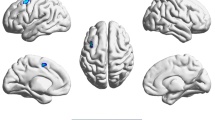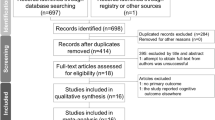Abstract
Introduction
The effects of any drug treatment on cognitive function are typically studied in groups of subjects. Observations made about the behavior of the drug, in the study sample, are then generalized to the population from which the sample was drawn. However, the magnitude and pharmacodynamic qualities of the response to many central nervous system-active drugs are known to vary in the population. Therefore, it is useful to consider statistical models for the detection of cognitive change in response to a drug treatment in individual subjects.
Materials and methods
In this report, we first outline the statistical assumptions and requirements for the reliable estimation of clinically relevant individual change in cognition. We then used the sedative benzodiazepine, alprazolam, as a pharmacologic challenge in healthy volunteer subjects to test our statistical model, using a parallel groups placebo-controlled study design. After treatment, the nature and severity of alprazolam-induced cognitive change was determined for each individual.
Results
Our proposed method and analysis showed an excellent sensitivity and specificity for alprazolam-related cognitive deterioration in individuals.
Discussion and conclusions
These findings, although preliminary, suggest that statistically reliable decisions about the effects of sedative drugs on cognition can be made for individuals.

Similar content being viewed by others
References
Anastasi A, Urbina S (1997) Psychological Testing, 7th edn. Prentice Hall, Upper Saddle River, NJ
Bland JM, Altman DG (1995) Multiple significance tests: the Bonferroni method. Br Med J 310:170
Bland JM, Altman DG (1996) Measurement error. Br Med J 313:744
Calabrese JR, Vieta E, El-Mallakh R, Findling RL, Youngstrom EA, Elhaj O, Gajwani P, Pies R (2004) Mood state at study entry as predictor of the polarity of relapse in bipolar disorder. Biol Psychiatry 56:957–963
Collie A, Darby DG, Falleti MG, Silbert BS, Maruff P (2002) Determining the extent of cognitive change after coronary surgery: a review of statistical procedures. Ann Thorac Surg 73:2005–2011
Collie A, Maruff P, Darby DG, McStephen M (2003a) The effects of practice on the cognitive test performance of neurologically normal individuals assessed at brief test-retest intervals. J Int Neuropsychol Soc 9:419–428
Collie A, Maruff P, McStephen M, Darby DG (2003b) Psychometric issues associated with computerised neuropsychological assessment of concussed athletes. Br J Sports Med 37:556–559
Darby D, Walsh K (2005) Walsh’s Neuropsychology: a clinical approach. 5th edn. Elsevier Churchill Livingstone, London
de Visser SJ, van der Post JP, de Waal PP, Cornet F, Cohen AF, van Gerven JM (2003) Biomarkers for the effects of benzodiazepines in healthy volunteers. Br J Clin Pharmacol 55:39–50
D’Souza DL, Levasseur LM, Nezamis J, Robbins DK, Simms L, Koch (2001) Effect of alosetron on the pharmacokinetics of alprazolam. J Clin Pharmacol 41:452–4554
Falleti MG, Maruff P, Collie A, Darby DG, McStephen M (2003) Qualitative similarities in cognitive impairment associated with 24 h of sustained wakefulness and a blood alcohol concentration of 0.05%. J Sleep Res 12:265–274
Guyatt GH, Walter SD, Norman GR (1997) Measuring change over time; assessing the usefulness of evaluative instruments. J Chronic Dis 40:171–178
Hinkle DE, Wiersma W, Jurs SG (1996) Applied statistics for the behavioural sciences. Houghton Mifflin, Boston
Ingraham LJ, Aiken CB (1996) An empirical approach to determining criteria for abnormality in test batteries with multiple measures. Neuropsychology 10:120–124
Jacobson NS, Truax P (1991) Clinical significance: a statistical approach to defining meaningful change in psychotherapy research. J Consult Clin Psychol 51:12–19
Jenkinson C (1995) Evaluating the efficacy of medical treatment; possibilities and limitations. Soc Sci Med 74:68–80
Lesch KP, Gutknecht L (2004) Focus on The 5-HT1A receptor: emerging role of a gene regulatory variant in psychopathology and pharmacogenetics. Int J Neuropsychopharmacol 7:381–385
Macher J-P, Corcq M-A (2004) Treatment goals: response and nonresponse. Dialogues Clin Neurosci 6:83–91
Mollica C, Maruff P, Vance A (2004) Statistical method for detection of cognitive improvement in individual children with ADHD-CT. Hum Psychopharmacol 19:445–456
Mollica CM, Maruff P, Collie A, Vance A (2005) Repeated assessment of cognition in children and the measurement of performance change. Neuropsychol Dev Cogn C Child Neuropsychol 11:303–310
Rasmussen LS, Larsen K, Houx P, Skovgaard LT, Hanning CD, Moller JT, the ISPOCD group (2001) The assessment of postoperative cognitive function. Acta Anaesthesiol Scand 45:275–289
Redelmeier DA, Tversky A (1990) Discrepancy between medical decisions for individual patients and for groups. N Engl J Med 322:1162–1164
Schroder MD, Snyder PJ, Sielski I, Mayes L (2004) Impaired performance of children exposed in utero to cocaine on a novel test of visuospatial working memory. Brain Cogn 55:409–412
Snyder PJ, Werth J, Giordani B, Caveny A, Feltner D, Maruff P (2005) A method for determining the magnitude of change across different cognitive functions in clinical trials: The effects of acute administration of two different doses alprazolam. Hum Psychopharmacol 20:263–273
Stewart SA (2005) The effects of benzodiazepines on cognition. J Clin Psychiatry 66(Supp 2):9–13
Vermeeren A, Jackson JL, Muntjewerff ND, Quint PJ, Harrison EM, O’Hanlon JF (1995) Comparison of acute alprazolam (0.25, 0.50 and 1.0 mg) effects versus those of lorazepam 2 mg and placebo on memory in healthy volunteers using laboratory and telephone tests. Psychopharmacology (Berl) 118:1–9
Verster JC, Volkerts ER (2004) Clinical pharmacology, clinical efficacy, and behavioral toxicity of alprazolam: a review of the literature. CNS Drug Rev 10:45–76
Verster JC, Volkerts ER, Verbaten MN (2002) Effects of alprazolam on driving ability, memory functioning and psychomotor performance: a randomized, placebo-controlled study. Neuropsychopharmacology 27:260–269
Williams JL, Naylor CD (1992) How should health status be assessed? Cautionary notes on procrustean frameworks. J Clin Epidemiol 45:1347–1351
Wong SL, Locke C, Staser J, Granneman GR (1998) Lack of multiple dosing effect of sertindole on the pharmacokinetics of alprazolam in healthy volunteers. Psychopharmacology 135:236–241
Author information
Authors and Affiliations
Corresponding author
Rights and permissions
About this article
Cite this article
Maruff, P., Werth, J., Giordani, B. et al. A statistical approach for classifying change in cognitive function in individuals following pharmacologic challenge: an example with alprazolam. Psychopharmacology 186, 7–17 (2006). https://doi.org/10.1007/s00213-006-0331-5
Received:
Accepted:
Published:
Issue Date:
DOI: https://doi.org/10.1007/s00213-006-0331-5




